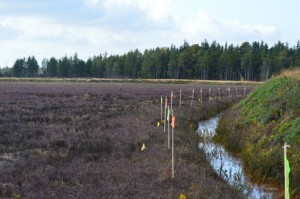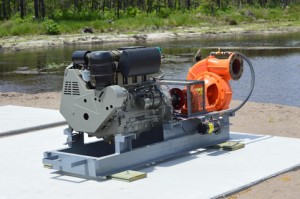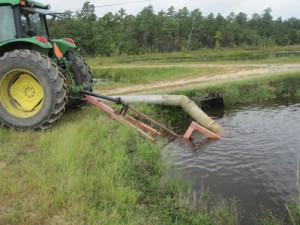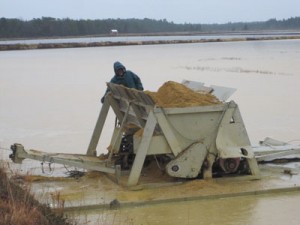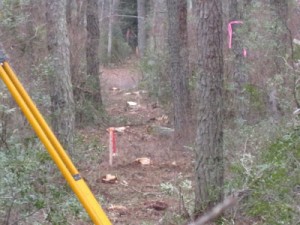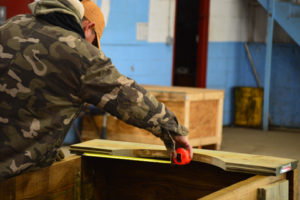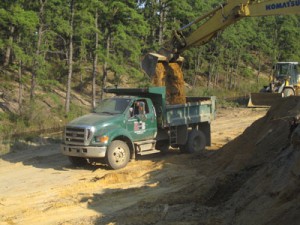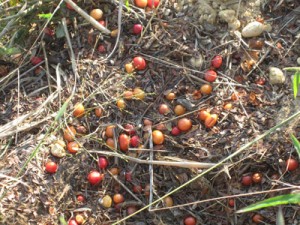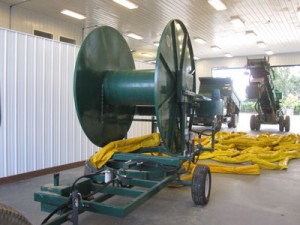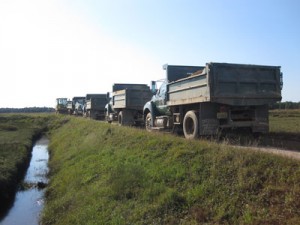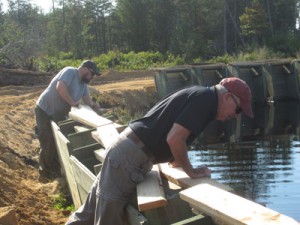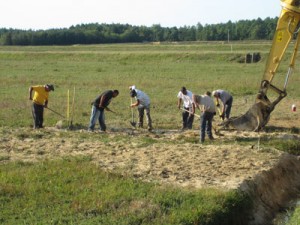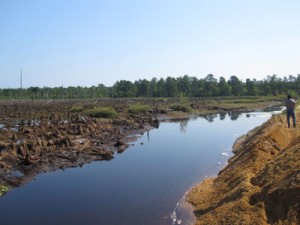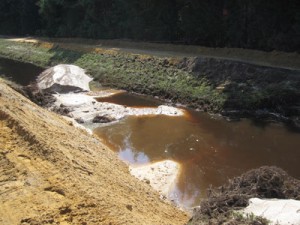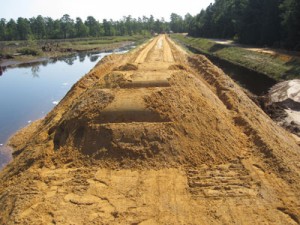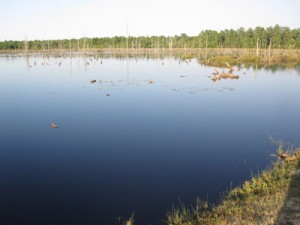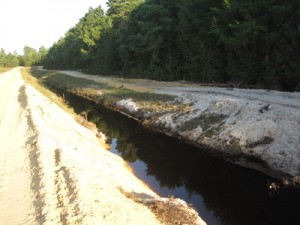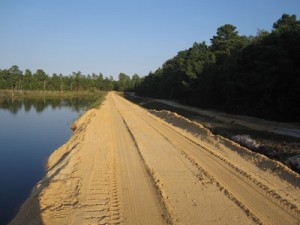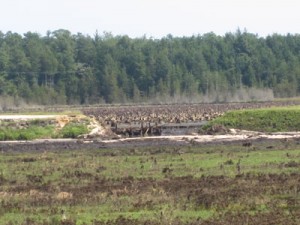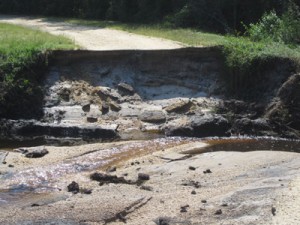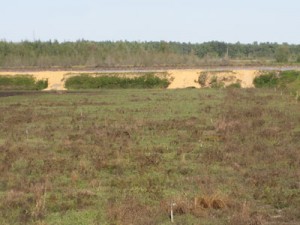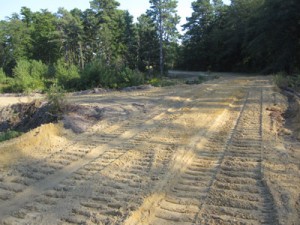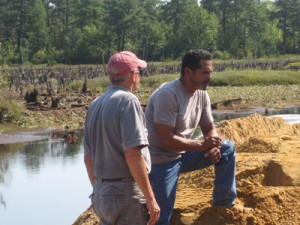While southern New Jersey hasn’t had a storm that’s been as heavy as other areas in the Northeast, we’ve still received more than our share of rain in the last week, which means our team has had to make some changes to our daily plan to compensate.
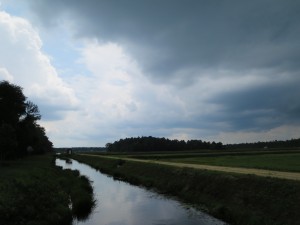
“If we get two inches tomorrow we’ll have people working indoors,” says COO Bryan vonHahmann. “It all needs to get done, but we’d like some projects to get done faster. But we can’t control the weather, so we’re making alternative plans depending on how much it hold us up. Up until now I’d say the rain was a good thing for us, but the next 2 to 3 inches I don’t think we need!”
One way it’s slowing us down: the current bog renovation. “We’ve had to switch things around a little because we don’t want to wreck the dams or the bogs we’re renovating,” Bryan says. “We have the Hydremas still plugging away but they’re hauling away less per load.” Bog renovation manager Steve Manning has made changes as necessary, however. “We’re still putting the subsoil in, but we’re holding off on the top sand, which in turn is holding up putting the pipe in and all that,” Steve says. “We can still screen sand in this weather, though, which is good. So in the meantime, we’re moving equipment around as needed, and we’ll probably do some work tomorrow for the canal we’re putting in.”
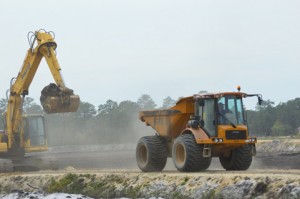
Our team has also had to make some changes to the fertilizer applications. “We should be doing those right now, but it will wash through soil faster, and the planes can’t fly when it’s overcast anyway,” Bryan says. “So if it clears up in time, the current plan will be to fly on Sunday.”

While some tasks are being held up, there have been some advantages. “We’re still doing a lot of scouting,” says Matt Stiles. “It’s actually been a help; we can walk the bog and see what needs to be fixed much more easily, particularly anywhere the drainage in a bog isn’t quite right.”
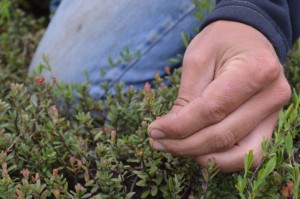
Water, as always, is a particular concern, but while we’ve had quite a bit of rain it hasn’t been more than the team can handle. “We’re keeping the reservoirs well below where we normally hold them,” says Matt Giberson. “It’s actually a little easier right now because with the rain and the warmer weather, we haven’t had to run for frost, so we can be a bit more aggressive with reservoirs and canals and just keep a eye on things in case we do get a big rain.” So far the farm has had about 3.2 inches this week, and they’re calling for another 2 to 4 over the next couple of days. Fortunately, Matt says, “It’s been steady but it hasn’t been dramatic. So we’ve just been trying to maintain dams ahead of time, crowning them when we can and fixing any erosion where it comes down really hard. But they’ve been in fairly decent shape; we haven’t really had a downpour so far, just half an inch here, half an inch there. And there hasn’t been any washout on the young beds, which is great.”
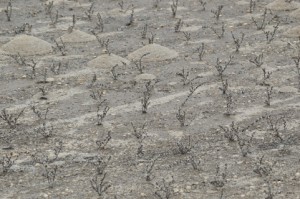
It all comes down to flexibility! Farming is all about doing what you have to do when you when it’s time to do it, and our team makes sure to plan for every possible outcome.

